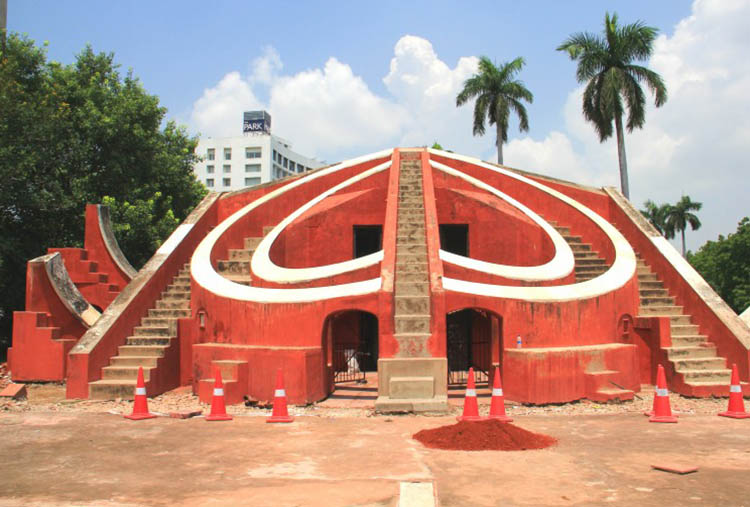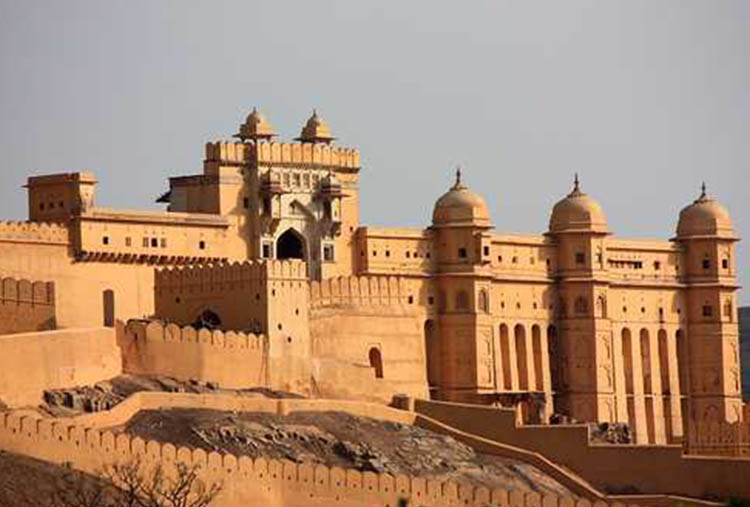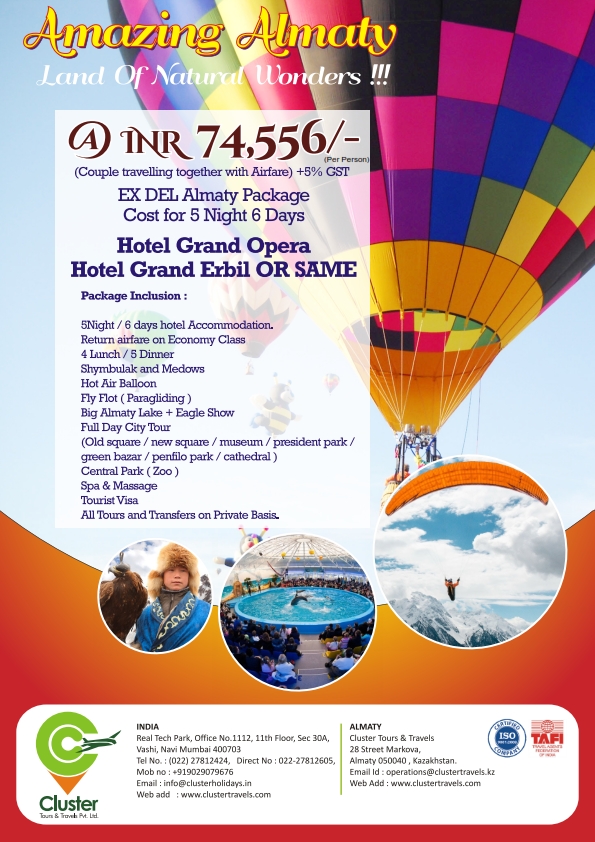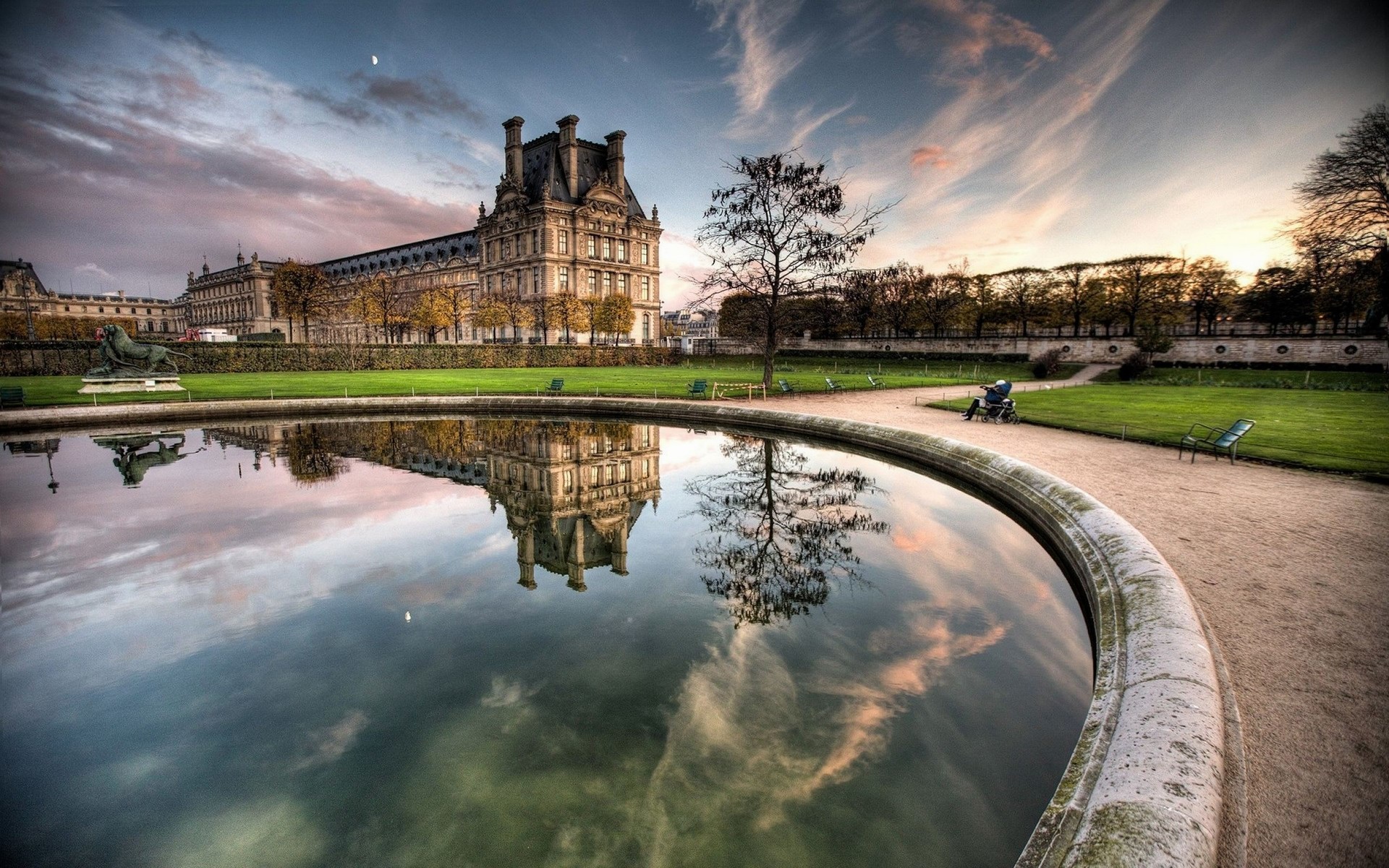




DAY 01 – JAIPUR
Today arrive Jaipur and transfer to your hotel. The capital of Rajasthan Jaipur – popularly known as the “Pink City “as the Pink sandstone was used to construct the buildings in Old walled city. Jaipur owes its name, its foundation and it’s planning to the Great warrior astronomer Maharaja Jai Singh II (1699–1744 AD). Jaipur (City of Victory) was founded by Maharaja Sawai Jai Singh II in 1727. It is the only city in the world symbolizing the nine divisions of the Universe through nine rectangular sectors sub-dividing it. The architect who formalized the city’s plans on the Shilpa Shastra, the epic Hindu treatise on architecture, mixed it with the sublimity of the Mughal and Jain influences of those times. The city was painted pink in 1853 in honour of the visit by Prince Albert. Except for the busy traffic of bicycles, cars and buses, little seems to have changed.
Overnight at Hotel
DAY 02 – IN JAIPUR
After breakfast proceed for full day city tour of Jaipur – visiting Amer Fort located at a distance of 11 kilometers from Jaipur and was the old fort of the Kachhwaha clan of Amber, which used to be the capital, till it was moved to Jaipur. The fort is built with white marble and red sandstone and looks even more attractive because of the Maota Lake in the foreground. The fort in itself is a beautiful sight to behold but as one looks on the fort with its clear reflection on the lake in the front; one cannot help but wonder if it is a dream or a beautiful illusion. An elephant [Subject to availability/alternatively by jeep] will spare you the trouble of reaching up to the fortress. Once on top, stroll through the sprawling complex of courtyards and halls;
Later visit the City of Jaipur. Among the highlights to be seen while touring Jaipur include the City Palace, which is an overwhelming complex of exquisite palaces, gardens and courtyards, decorative art and carved doorways. The palace museum houses collections of rare manuscripts, armory, costumes, carpets and miniature paintings. Walk to the adjacent Jantar Mantar or Astronomical Observatory made by the Maharaja of Jaipur, built in 1726 and is one of the five such astronomical wonders built by Sawai Jai Singh and makes accurate predictions even to this day. You will also have the opportunity to wander about the local markets. Jaipur is a shopper’s paradise. Most of the bazaars are located in old city with wide range of things to buy, from jewelry (precious and semi-precious stones) to textiles to handicrafts and antique. No doubt for an avid shopper “Jaipur” is the choicest of the cities.
Overnight at Hotel
DAY 03 – JAIPUR – AJMER – PUSHKAR – JODHPUR (400 KMS)
After breakfast drive to Jodhpur enroute visit Ajmer & Pushkar.
Ajmer was founded in the 11th century by Chauhan ruler Ajaipal and is dominated by the Taragarh fort. It is a major centre for Muslim pilgrims during the fast of Ramzan on account of being home to the Dargah of Sufi saint Khwaja Moin-ud-din Chishti. Seven pilgrimages to Ajmer are supposed to equal one to Mecca.
Ajmer has some superb examples of early Muslim architecture and a lively bazaar and is located conveniently close to Pushkar. Visit the Dargah (tomb) of Khwaja Moin-ud-din Chishti, the Ana Sagar Lake.
Later drive to Pushkar; at its heart is one of India’s most sacred lakes. There are 52 ghats around the lake, and numerous temples. The Brahma temple, especially, attracts pilgrims all year around. Apart from its religious significance, Pushkar is known for its Cattle and Camel fair held every year in the month of Kartik (October/November), which attracts visitors in their thousands. You can also witness and participate in the evening prayer meetings in the temples. Being a religious town, alcohol and non-vegetarian food are taboo. Pushkar separated from Ajmer by Nag Pahar, the snake mountain. This traveller-friendly town clings to the side of the small Pushkar Lake with its many bathing ghats and temples. For Hindus, Pushkar is a very important pilgrimage centre and you’ll see plenty of Sadhus (individuals on a spiritual search). Pushkar boasts temples, the most famous is the Brahma Temple, said to be one of the few temples in the world dedicated to this deity…
Later continue to drive to Jodhpur; Arrive to the Blue City – Jodhpur and transfer to your hotel.
An oasis in the arid Thar Desert, Jodhpur is the second largest city in the state of Rajasthan. Representing this colourful city with shades of blue, Jodhpur has a history that is rich and a present that beckons strongly to the discerning tourist. Forts and palaces, temples and havelis, culture and tradition, spices and fabrics, colour and texture, Jodhpur has them all and in plenty. Situated in Western Rajasthan, Jodhpur has long attracted both the domestic and outside tourist. It not only offers tangibles, in terms of what you can see and buy but also fills one with a sense of history and the splendours of an era gone by. The hospitality of the locals, the demure women, and the colourful turbans -all set against the beloved desert (Marwar) is something to feel, not just see. Every pore of Jodhpur tells its own tales of heroic deeds that made legends out of kings and soldiers, romances that continue to warm the heart and a time when epics were lived out on the streets by everyday man.
Overnight at Hotel
DAY 04 – JODHPUR – RANAKPUR – UDAIPUR (300 KMS)
After breakfast proceed for city tour of Jodhpur visit the Meherangarh Fort, situated on a low sandstone hill. The palace apartments like Sukh Mahal, Phool Mahal, and Sheesh Mahal etc are beautifully decorated and house Jewellery, costumes, armoury, palanquins, howdahs and other remnants of the past.
See the Jaswant Thada, an imposing marble memorial to Maharaja Jaswant Singh II built in 1899. Later the royal crematorium and three other cenotaphs were also built here. Also visit Sardar Bazaar and Clock Tower markets where you can see the vegetable, spice, Indian sweets, and textile and silver markets. These colourful markets with tiny shops dot the narrow lanes replete with woodcarvings, wrought iron, lacquer work, silver and ivory ornamentation and leather handicrafts.
Later continue to drive to Udaipur enroute visiting Ranakpur – is the largest Jain temple complex in India and dates to the 15th century. The main temple is dedicated to Adinath, the first Tirthankar. Intricate carvings detail mythological figures, patterns and motifs on the walls, pillars and domes. There are 1444 ornately carved marble pillars in the complex and none of them are similar. The beautiful lace-like interiors of the domes are a superb example of western Indian temple style. Surya temple and other Jain temples are side attractions. (Temples open only at 1200 Hrs. Leather belts, footwear, bare legs and black clothing not allowed)
Later drive to Udaipur; Arrive Udaipur and transfer to your hotel. Set on the shores of Lake Pichola and surrounded by hills, Udaipur grew in complete contrast to the harsh deserts of the rest of Rajasthan. As capital of the old Mewar State it was the only Rajput stronghold to uphold its Hindu allegiance in the face of Muslim invasion. This fairy – tale city, with its marble palaces and lakes surrounded by a ring of hills, was founded by Maharana Udai Singh in 1559. The city is dominated by massive City Palace, which overlooks Lake Pichola with its romantic island palaces. Picturesque havelis, ghats and temples line the lake front, with the lively bazaars of the old walled city stretching behind them.
Overnight at Hotel
DAY 05 – IN UDAIPUR
After breakfast proceed for half day city tour of Udaipur – visiting the City Palace and Museum. The largest palace complex in India, it is a blend of Mughal and Rajput influences. Also see the 17th century Jagdish temple, drive around the Fatehsagar Lake, and visit the Sahelion ki Bari (the Garden for the Maids of Honour), an ornamental pleasure garden with fountains and marble kiosks. Later visit the Bharatiya Lok Kala Mandir or the Folk Art Museum.
Later in the evening take a boat ride on the 4 km long and 3 km wide Lake Pichola, which is fringed with hills, palaces, havelis, ghats, embankments and temples and offers spectacular views of the city. Visit the Jag Mandir Island with its exquisite Gul Mahal Pavilion.
Overnight at Hotel
DAY 06 – DEPART UDAIPUR
After breakfast in time transfer to Udaipur Airport / Railway Station to board your flight/train for onward destination.
Hotels Accommodation
Mail as per Itinerary
Economy Air Ticket
Tourist VISA
Travel Insurance
There is no content
1) Jaipur is the capital of India’s Rajasthan state. It evokes the royal family that once ruled the region and that, in 1727, founded what is now called the Old City, or “Pink City” for its trademark building color. At the center of its stately street grid (notable in India) stands the opulent, colonnaded City Palace complex. With gardens, courtyards and museums, part of it is still a royal residence.
2) Ajmer is a city in the northern Indian state of Rajasthan. South of the city’s artificial Ana Sagar Lake is Ajmer Sharif Dargah, the domed shrine of the Muslim Sufi saint Garib Nawaz. Nearby, a 16th-century palace built by the Mughal emperor Akbar now houses the Ajmer Government Museum, displaying armor and stone sculptures. A museum at the Indo-Saracenic–style Mayo College exhibits art and taxidermied birds.
3) Pushkar is a town bordering the Thar Desert, in the northeastern Indian state of Rajasthan. It’s set on Pushkar Lake, a sacred Hindu site with 52 ghats (stone staircases) where pilgrims bathe. The town has hundreds of temples, including 14th-century Jagatpita Brahma Mandir, dedicated to the god of creation, which has a distinctive red spire and walls inlaid with pilgrims’ silver coins.
4) Jodhpur is a city in the Thar Desert of the northwest Indian state of Rajasthan. Its 15th-century Mehrangarh Fort is a former palace that’s now a museum, displaying weapons, paintings and elaborate royal palanquins (sedan chairs). Set on on a rocky outcrop, the fort overlooks the walled city, where many buildings are painted the city’s iconic shade of blue.
5) Ranakpur is a village located in Desuri tehsil near Sadri town in the Pali district of Rajasthan in western India. It is located between Jodhpur and Udaipur.
6) Udaipur, formerly the capital of the Mewar Kingdom, is a city in the western Indian state of Rajasthan. Founded by Maharana Udai Singh II in 1559, it’s set around a series of artificial lakes and is known for its lavish royal residences. City Palace, overlooking Lake Pichola, is a monumental complex of 11 palaces, courtyards and gardens, famed for its intricate peacock mosaics.
Special Offers





